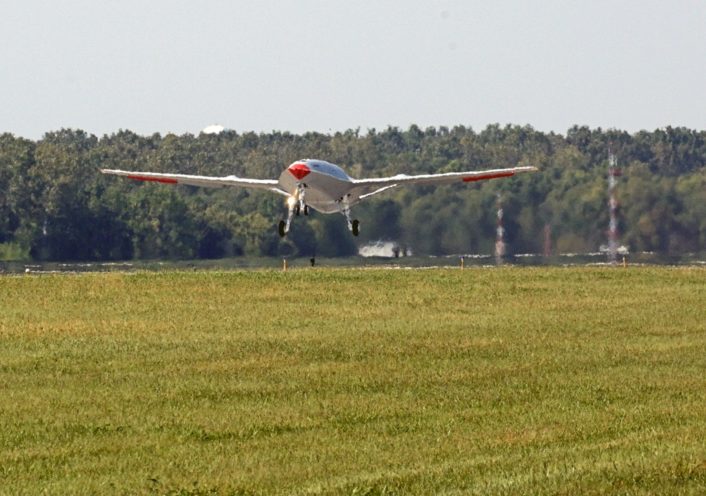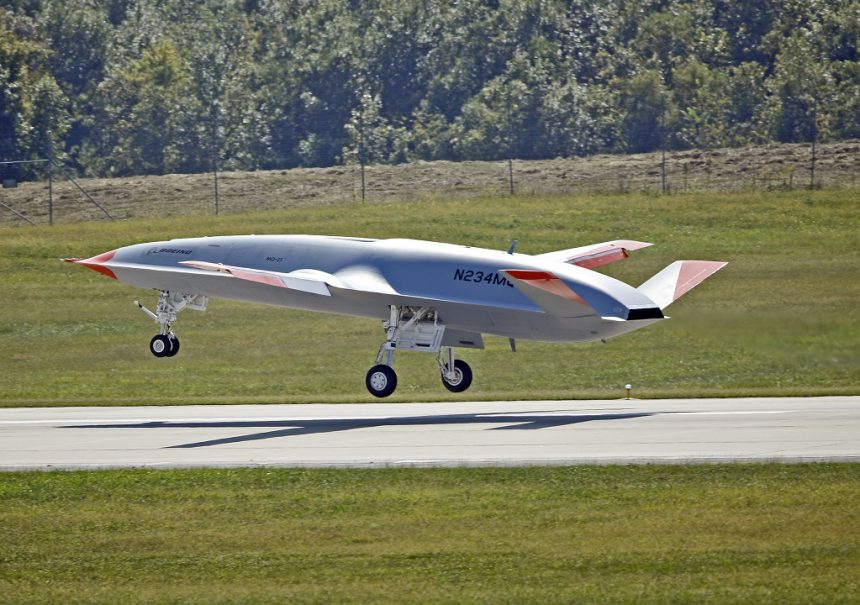The first test asset flew autonomously just one year after the contract award
The U.S. Navy and Boeing announced on Sept. 19, 2019 the first flight of the MQ-25 Stingray test asset from MidAmerica St. Louis Airport in Mascoutah, Illinois, which is adjacent to Scott Air Force Base. The drone is set to be the first carrier-launched autonomous Unmanned Aerial Vehicle to be integrated in a Carrier Air Wing.
The Boeing-owned test asset, known as T1 (Tail 1) and sporting the civilian registration N234MQ, completed the autonomous two-hour flight under the supervision of Boeing test pilots operating from their ground control station. The aircraft completed an FAA-certified autonomous taxi and takeoff and then flew a pre-planned route to validate the aircraft’s basic flight functions and operations with the ground control station, according to the official statement.

Capt. Chad Reed, Navy’s Unmanned Carrier Aviation (PMA-268) Program Manager, stated: “Today’s flight is an exciting and significant milestone for our program and the Navy. The flight of this test asset two years before our first MQ-25 arrives represents the first big step in a series of early learning opportunities that are helping us progress toward delivery of a game-changing capability for the carrier air wing and strike group commanders.”
This first test asset is being used for early development before the production of four Engineering Development Model (EDM) MQ-25s under an USD $ 805 million contract awarded in August 2018 in a Maritime Accelerated Acquisition (MAA) program, which aims to deliver mission-critical capabilities to the U.S. Navy fleet as rapidly as possible.
According to Boeing, T1 received the experimental airworthiness certificate from the Federal Aviation Administration earlier this month. Testing of this first development asset will continue over the next years to further early learning and discovery that advances major systems and software development, ahead of the delivery of the first EDM aircraft in FY2021 and in support of a planned Initial Operational Capability (IOC) for 2024.
The MQ-25 Stingray will be the first operational carrier-based UAV, designed to provide an aerial refueling capability and Intelligence, Surveillance and Reconnaissance (ISR), and the second UAV to operate from an aircraft carrier, after the Northrop Grumman X-47B Pegasus that was tested both alone (2013) and alongside manned aircraft (2014) from the USS George H.W. Bush (CVN-77) and the USS Theodore Roosevelt (CVN-71). The integration of the Stingray into the Carrier Air Wing will ease the strain on the F/A-18E Super Hornets that currently perform buddy-tanker missions in support of the aircraft carrier’s launch and recovery operations, leaving them available for operational taskings.









